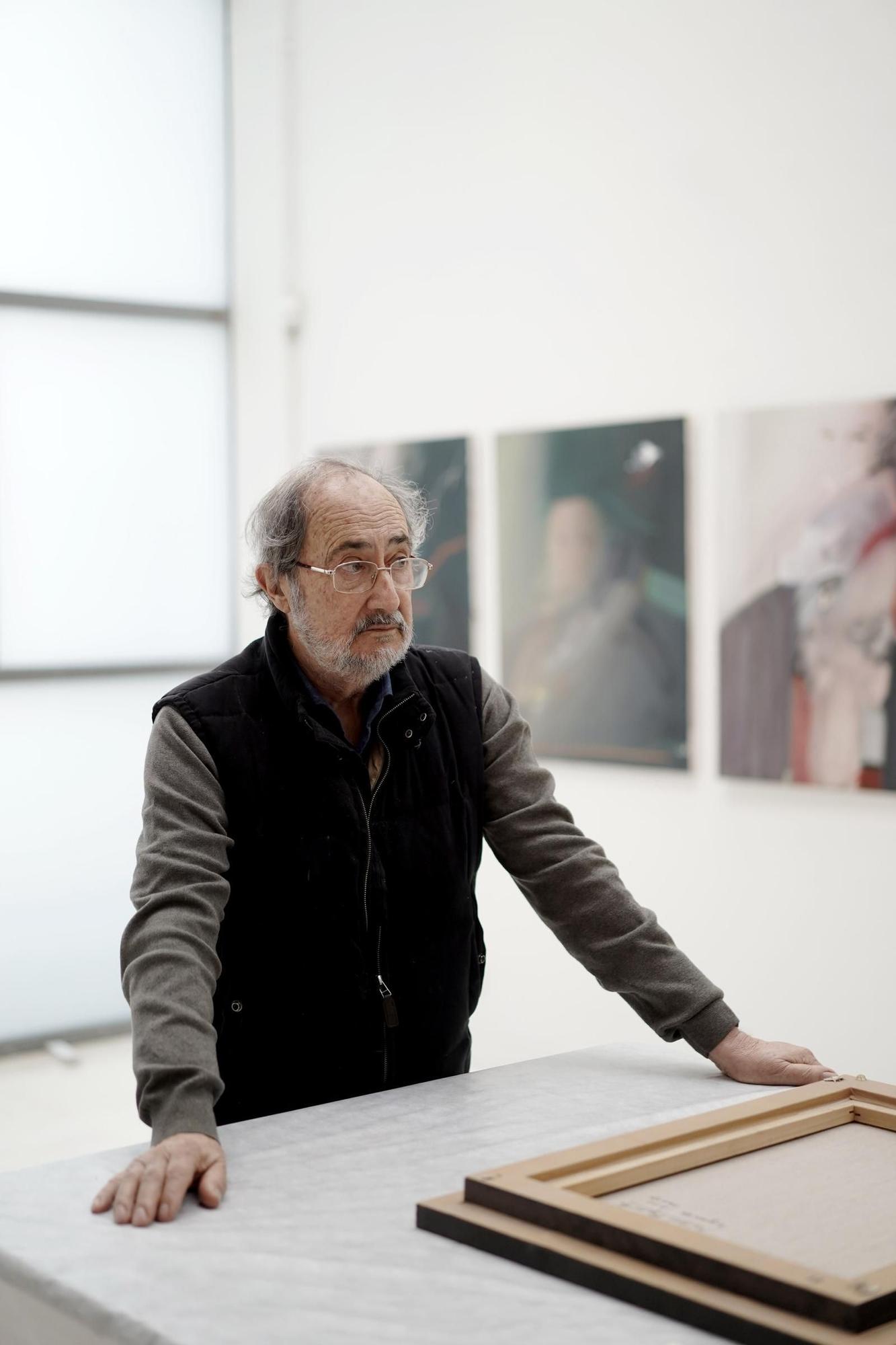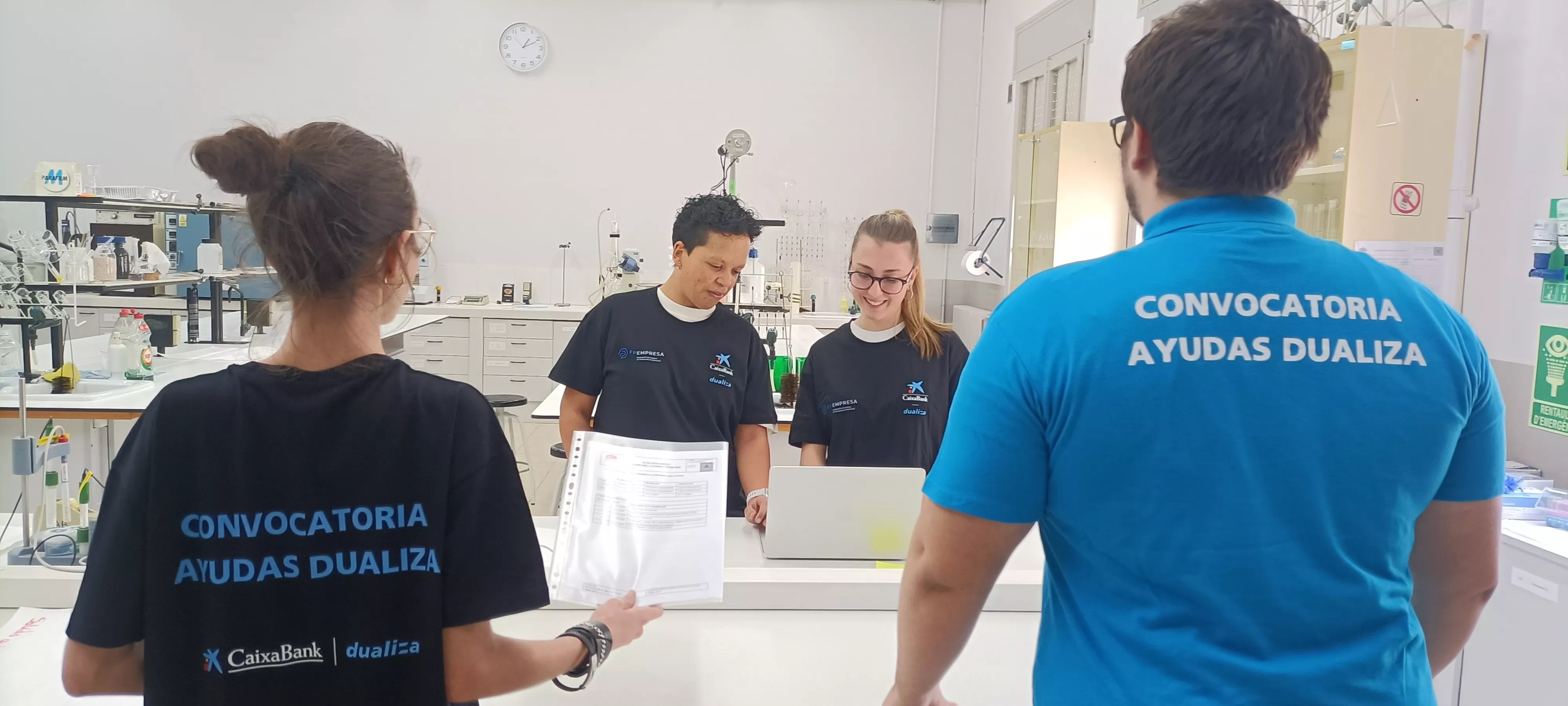During the pandemic years this painter, Jose Luis Fajardo (La Laguna, Tenerife, 1942), of a generation that includes Antonio Saura, Jose Luis Alexanco, Lucio Munoz either Manolo Millares, he did not leave his house even to buy paintings. With what was there, imagination, experience and paints, she sat down every day (every day) in front of the canvases that were already in his studio and finished at least a thousand paintings. Some had to do with the stupor that society lived around and others were due to old passions of his, among which are the look, the eyes in the paintings, the spellings reminiscent of Cy Twombly’s underlining, and many audacity typical of his long career as painter.
Everything was coming out as part of a testimony that underlines his obsessions. His friend, the designer Pedro García Ramos (and his son, who has the same name) have helped him put each painting in its place and from that immense amount of paint they have helped him to hang some one hundred and twenty paintings that will be on display this Thursday. exhibited in an area that poses an almost supernatural challenge, as this effort by Fajardo will coexist, as he says, “with the Martyrdom of Rubens”, since the crucifixion famous by the impressive flamenco painter is an unusual touchstone for this exhibition that ranges from the pandemic, another martyrdom, to the struggles and imaginations of the Canarian artist.
The incomparable setting that hosts this challenge is, of course, the headquarters of the Charles of Antwerp Foundation (Claudio Coello, 99, Madrid), where that painting by Rubens (Martyrdom of Saint Andrew, 1639) has highlighted for centuries the importance that this painting had among us. Fajardo did not expose in Madrid since 2010. Then he brought out what he calls “the white squares”, while here he exhibits those that, in a certain way, have more to do with the darkness of the time. Of these now and of those who are part of his unrepentant passion for making painting a way of speaking, we chatted with him right next to his most impressive challenge, the neighborhood of a martyrdom of Rubens.
Q. Here you have paintings from various eras. What have you painted lately?
R. With the pandemic I was locked up, like everyone else, and I began to fill in scribble papers. It was like that for two, or almost three years, and one day I realized that I had a thousand and odd wallpapers. Here there will only be about 30 or 40 of those papers. The rest are pieces that obey different series in which I have been working, such as those of the Goyesque characters… Pedro García Ramos has chosen what seemed most coherent to him.
Q. And what he has chosen, what does it mean in his painting?
R. It means maturity, the end of a stage. Or of my life, right? The drawings signify the enormous freedom of expression on paper.
Q. How did the pandemic?
R. Fundamentally it gave me enormous discipline. I’ve always had it, but since I couldn’t go out, well… I had the feeling of total freedom and, since the pandemic caught me with a lot of paper, I didn’t need to go looking for materials either.
Q. What do those paintings say?
R. Don’t know. Because they say that neither looks like the other. The reflection that I have made seeing everything I did is that I have worked with great freedom and I got one thing and another, each daughter of her father and her mother.
Q. Has your way of painting changed with these recent accidents?
R. It is not the same. Freedom is the basis and if you let yourself be guided by it, you create without obstacles. Then the stage of classifying will come and that.
Q. What you have painted does not necessarily have to do with the pandemic. What does his current painting have to do with it?
R. With my previous life. Now that I have reviewed practically all my work, I have seen that I have always been consistent. Even if I paint some potatoes or some vegetables, my concept of painting has always been the same.
Q. But how has your relationship with painting changed?
R. It is that if I thought about that I would get into the territory of doubt, fundamentally. And I have never considered repeating myself. But I also know that it’s not enough to stain the canvas, huh. What interests me is concentrating, getting up early and then getting to work and realizing that six hours have passed and you haven’t heard. It is the painting that shows you the path to follow and, if I see that there is something clumsy, I keep it for a couple of years and go back to it and wait for it to tell me where to go.
Q. Has the present mattered to you to paint?
R. No. What I have tried is to be contemporary. In other words: I don’t focus on the fact that the painting has to belong to a specific time because… then everything would be false. The painting belongs to my world and that’s it. There is no more reflection.
Q. Where does your passion for eyes come from? There are eyes, always eyes, silent or non-existent mouths, and eyes.
R. This morning a man who is hanging the pictures told me: listen, have you never painted a mouth? Well no. In the place of the mouth I have come to put the word silence, as if indicating that I want to be in that world of silence. The silence of the painting. Generally, all paintings have a vanishing point, but I have to point it out with something. A word, for example.
Q. What distinguishes your generation? Who are your companions and what has become of them?
R. Well… I already bring flowers to most of my classmates. I am a survivor, from the chronological point of view. But I don’t feel old. Despite the ailments, I feel mentally well and that comforts me. What happens is that, sometimes, I am tempted to call someone to find out what they think of something and… it is not possible anymore, they have already gone to the chercha [así se llama al cementerio anglicano en el lenguaje popular de Canarias].
Q. Are they people who have only been your friends or who have also influenced your way of painting?
R. There has been everything. There are those who you consider a friend in the world of painting, very few, because the world of painters is very lonely. I have spent years sharing a workshop with José Luis Alexanco and we never talked about painting. It was taken for granted that each one had his system, intimately. We didn’t let other painter friends in because they had an enormous imitative capacity. They did not copy, they felt influenced and the next day they were already capturing it in his paintings.
Q. Of those that you did let in, who have left their mark on you?
R. The biggest footprint I have had in my life is that of Manolo Millares. In Manolo there was mystery and honesty. That’s kind of impressive, isn’t it? Lucio Muñoz has also left a mark on me. They are people who also had respect for my work. Lucio would call me and tell me: “come and see my paintings, see what you think”. That frankness, that honesty, that non-envy, respect and admiration for each other united us. Once he disappeared… well, I continue to admire and respect his work. Without despising mine, huh. Each one has its work coordinates and that’s it.
Q. Now, when you see your paintings here, what do you feel?
R. First of all, I have had a feeling of surprise. Second, I was terribly afraid of exposure. Because it had been a long time since I had exhibited and the time came when I was not interested in exhibitions, or the art market or anything. I thought my time was up. My public time, let’s say, because I have continued working. Due to the death of José Luis Alexanco and, previously, due to an illness that made us have to leave the workshop, I could no longer do big things and I started with what I did in the pandemic. I have also rescued some stored, covered paintings and… look now: it turns out that I am accompanied by Rubens, and… in the sense that Picasso said: if my family is the Prado, how can I not be happy? Well, look: Rubens (this Martyrdom of Saint Andrew) it’s part of my family and also being here, in a place founded centuries ago, well… it’s a miracle!
Pedro García Ramos has included in the exhibition phrases that over time have formed part of the reflections that Fajardo has made, in various texts, including interviews. “Since we were children we were rocked in cradles, on swings. They taught us the vertigo of the fall. They covered us with words. Now, in old age, the trap is another; now they sit us in the rocking chair to forget”. “I was entangling with Goya and the teacher took me by the hand to discover the obsessions and the silence of the deaf, to search among those shot at night for encouragement to stay alive”. “Sometimes I recognize myself as an island, as if it were an island with history exhausted by isolation.” “What is painting if not the attempt to fix the image of another reality, or a manual gesture to gain freedom against time”.
A poet painting, now in front of a martyrdom legendary.

















